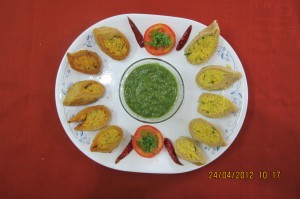In many of my blogs I have suggested the dish to be served with dhania ki chutney. But I have not described how to prepare it. I propose to do it now.
In a way, it is really silly of me to post a blog on Dhania ki chutney presuming that others do not know about it, when it is the commonest chutney prepared in any north Indian house hold. But then this dhania chutney is with a Bihari twist. It has very few ingredients but immensely tasty.
Ingredients
- Dhania leaves 100 gms
- Amchoor 10 gms
- Garlic 6 to 8 eight cloves
- Green chilies according to taste
- Mustard oil
- Salt
Method
- Wash the dhania leaves thoroughly and chop roughly.
- Put the leaves in a grinder.
- Add garlic, amchoor and green chilies.
- Grind finely. If thick add a little water.
- Take out from grinder and add salt and 1/4 spoon of raw mustard oil. In fact, mustard oil is the game changer.
The chutney is ready to be served. Some people add lemon juice also to it. But this compromises with the taste of amchoor.
Dhania chutney should be served as fresh as possible. If kept for a long duration the aroma of dhania gets evaporated. And the whole fun of dhania chutney lies in the aroma of dhania and pungency of raw mustard oil.




















